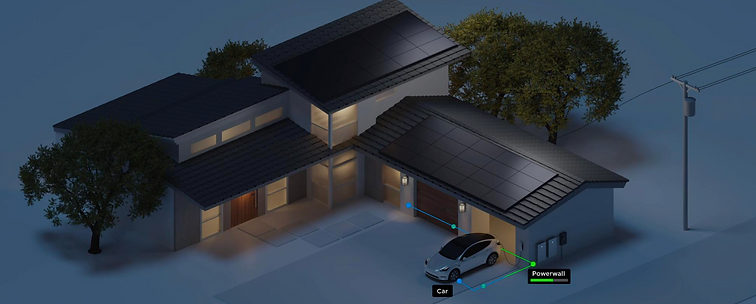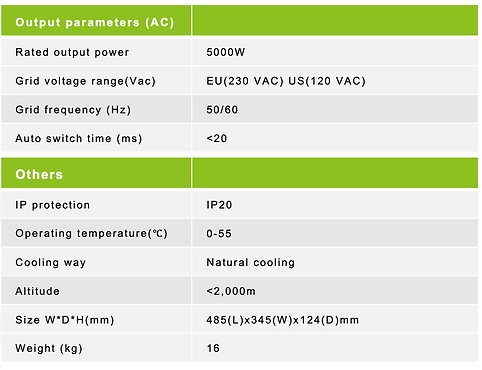

AS
WORKS?
PANELS + INVERTER + BATTERY
Energy storage systems are gaining popularity as an effective way to harness solar energy and reduce reliance on the traditional electrical grid. These systems typically consist of three main components: solar panels, an inverter, and a storage battery.
Solar panels are responsible for converting sunlight into electricity through a photovoltaic process. This electricity generated initially is in the form of direct current (DC), which is suitable for storage but not for direct use in common electrical devices.
This is where the inverter comes into play. Its function is to convert the direct current (DC) generated by the solar panels into alternating current (AC), which is the form of electricity we use in our homes to power appliances, lights, and other devices.
Finally, the storage battery is key to the efficient operation of the system. This battery stores the excess electricity generated by the solar panels during the day for use at times when electricity demand exceeds solar production, such as during the night or on cloudy days.
In summary, home energy storage systems, comprised of solar panels, an inverter, and a storage battery, offer an efficient and sustainable way to harness solar energy, thereby reducing long-term energy costs and contributing to environmental conservation.
%2011_22_21%E2%80%AFa_m_.png)
PANELS
%2011_22_21%E2%80%AFa_m_.png)
INVERTER
%2011_22_21%E2%80%AFa_m_.png)
BATTERY
%2011_22_21%E2%80%AFa_m_.png)

HOW DOES IT WORK?
During the day, when it is sunny, the electricity generated by the solar panel can be used in the home, and the excess solar energy will be stored in the battery (after the battery is full, the excess energy will be sent to the electrical network).
%201_08_05%E2%80%AFp_m_.png)
During the night, when the solar panel does not generate electricity, the battery is discharged for home use (if the battery power is low, you can still use electricity from the grid at the same time).
%201_08_13%E2%80%AFp_m_.png)
If the power grid goes down for any reason, whether due to a major storm or utility outage, battery emergency backup power can keep your lights on.
%201_08_23%E2%80%AFp_m_.png)
/ BENEFITS
A Home Energy Storage System can provide you with many benefits:
Reduce your electricity bills
By using photovoltaic and battery electricity, you can reduce the use (or even not use at all) of grid electricity to lower your electricity bills.Provide backup power in case of emergency
In 2021, Americans experienced power outages averaging seven hours (Louisiana and Oregon residents racked up more than a day without power). Energy storage batteries can keep your lights on when the power grid fails or even in the event of a major storm.Improve photovoltaic power generation efficiency
During the day, solar panels generate a lot of electricity, but at this time, no one is home and less electricity is used. If there is no energy storage battery, the excess electricity will be wasted. With a storage battery, the utilization rate of solar energy can increase from 30% to more than 80%.Use green energy
to reduce emissions and pollution

/ COMPONENTS

INVERTER
5KW OFF-GRID INVERTER
Precision and advanced MPPT tracking.
Supports lead-acid or lithium batteries (not mixed).
Support motor input (optional)
Supports parallel expansion up to 6 units, and supports three-phase output.
TECHNICAL SPECIFICATIONS
%2012_32_30%E2%80%AFp_m_.png)


ENERGY STORAGE BATTERY

Acadia Series
.jpeg)

A single standard 4.8/5 kWh module can be multi-pack parallel, and its capacity can be expanded to 5/7.5/10 kWh and others.
Top-of-the-line brand and high-quality cells, cycle life up to 3500 times (if charged and discharged once a day, it can be used about 10 years).
TECHNICAL SPECIFICATIONS
%2012_43_00%E2%80%AFp_m_.png)